The issue was that our server did not have TLS 1.2 enabled by default. Enabling TLS 1.2 and disabling TLS 1.0 fixed the issue - Win 2008
edit
There are a few things that needed to happen. Our server was on .net 4.5, which does not use tls 1.2 by default (apple requires tls 1.2 to be used). So, we upgraded our solution to .net 4.6, and also forced tls 1.2 for our request. Additionally, we have to include the merchant id certificate in our request to apple (which isn't mentioned in the docs very well).
You can find the github repo of the source I used here (https://github.com/justeat/ApplePayJSSample), but here is my code that I needed to put in my solution to make things work (I also had to export my merchant certificate from my mac's keychain that gave me a .p12 file. I imported this .p12 file into my server's computer certificate store)
[System.Web.Http.HttpPost]
public async Task<ContentResult> GetApplePaySession([FromBody] string url)
{
// http://stackoverflow.com/a/36912392/1837080
System.Net.ServicePointManager.SecurityProtocol = SecurityProtocolType.Tls12;
// Load the merchant certificate for two-way TLS authentication with the Apple Pay server.
var certificate = LoadMerchantCertificate();
// Get the merchant identifier from the certificate to send in the validation payload.
var merchantIdentifier = GetMerchantIdentifier(certificate);
// Create the JSON payload to POST to the Apple Pay merchant validation URL.
var payload = new ApplePayRequest()
{
merchantIdentifier = merchantIdentifier,
domainName = System.Web.HttpContext.Current.Request.Url.Host,
displayName = "[display name from apple developer portal]"
};
JObject merchantSession;
// Create an HTTP client with the merchant certificate
// for two-way TLS authentication over HTTPS.
using (var httpClient = CreateHttpClient(certificate))
{
var jsonPayload = JsonConvert.SerializeObject(payload);
using (var content = new StringContent(jsonPayload, Encoding.UTF8, "application/json"))
{
// POST the data to create a valid Apple Pay merchant session.
using (var response = await httpClient.PostAsync(url, content))
{
response.EnsureSuccessStatusCode();
// Read the opaque merchant session JSON from the response body.
var merchantSessionJson = await response.Content.ReadAsStringAsync();
merchantSession = JObject.Parse(merchantSessionJson);
}
}
}
// Return the merchant session as JSON.
return Content(merchantSession.ToString(), "application/json");
}
#region Apple Pay helper methods
private X509Certificate2 LoadMerchantCertificate()
{
X509Certificate2 certificate;
// Load the certificate from the current user's certificate store. This
// is useful if you do not want to publish the merchant certificate with
// your application, but it is also required to be able to use an X.509
// certificate with a private key if the user profile is not available,
// such as when using IIS hosting in an environment such as Microsoft Azure.
using (var store = new X509Store(StoreName.My, StoreLocation.LocalMachine))
{
store.Open(OpenFlags.ReadOnly);
// when using thumbprint from mmc, look at:
// http://stackoverflow.com/a/14852713
// there is a hidden character that you must delete
var certificates = store.Certificates.Find(
X509FindType.FindByThumbprint,
"[thumbprint]",
validOnly: false);
if (certificates.Count < 1)
{
throw new InvalidOperationException(
// ReSharper disable once UseStringInterpolation
string.Format(
"Could not find Apple Pay merchant certificate with thumbprint '{0}' from store '{1}' in location '{2}'.",
"[thumpprint]", store.Name, store.Location));
}
certificate = certificates[0];
}
return certificate;
}
private string GetMerchantIdentifier(X509Certificate2 certificate)
{
// This OID returns the ASN.1 encoded merchant identifier
var extension = certificate.Extensions["1.2.840.113635.100.6.32"];
// Convert the raw ASN.1 data to a string containing the ID
return extension == null ? string.Empty : Encoding.ASCII.GetString(extension.RawData).Substring(2);
}
private HttpClient CreateHttpClient(X509Certificate2 certificate)
{
var handler = new WebRequestHandler();
handler.ClientCertificates.Add(certificate);
return new HttpClient(handler, disposeHandler: true);
}
#endregion


